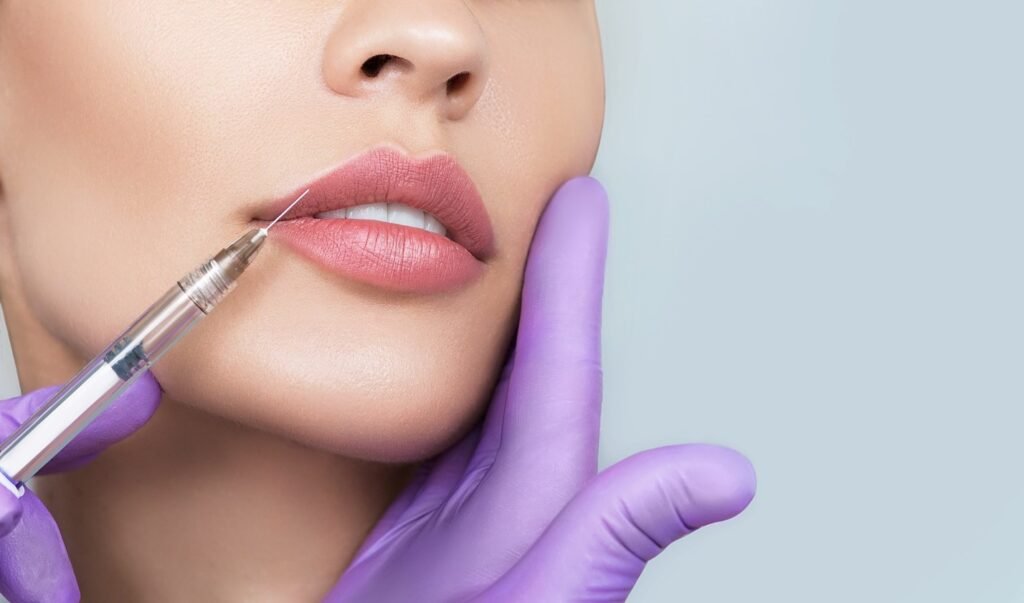Having plump, full, and pouty lips can easily grab the attention of people as they make an individual appear affectionate, confident, and youthful. Hence, it is not a surprise why lip fillers have become a staple procedure in many aesthetic clinics. Lip filler procedures in Singapore (https://www.cambridgemedical.com.sg/lip-fillers/) aren’t that complicated; inject the filler solution to the lips and you’re done, right? Wrong. This procedure requires expertise and skill to administer the fillers and mould them according to a patient’s desired outcome. Without experience and technique, the results of your lip filler procedure may end up nothing, but lip service.
What are the complications that can happen with a lip filler procedure and how can they be fixed?
1 Bruising
Mild bruising is a normal side effect following any procedure that involves injectables, but this should only be temporary. Bruising that goes beyond several days and forms blood clots underneath the surface of the lips is not considered “mild bruising.” This instance is called a “haematoma” and can result in painful and swollen lips. Haematoma can happen when:
- The method used when injecting the filler solution is inappropriate.
- The type of needle used for injecting the lip filler is wrong.
How to fix lip bruising or haematoma
Bruising, which is an expected side effect of a lip filler procedure, is usually temporary and goes away on its own. To better take care of your lips while healing, you can do the following:
- Apply cold compress to the treatment area
- Avoid strenuous physical activities as these can lead increase the flow of blood to the face
- Drink lots of water to lessen inflammation, improve the skin’s elasticity, and flush out toxins from the body
- Elevate your head when resting or sleeping to reduce bruising and swelling
- Skip salty foods that can cause the body to retain water and aggravate the inflammation of the lip tissue
- Use hyaluronidase to dissolve Hyaluronic Acid lip fillers in the affected area and drain the liquid build up
2 Bumps and lumps
A successful lip filler procedure should make your lips look plump without bumps and lumps. It is very rare for this type of complication to occur, but in the hands of an inexperienced aesthetic provider, there is a high chance that it could happen. Bumps and lumps appear when:
- The amount of filler injected is excessive.
- The filler causes an allergic reaction.
- The filler is injected very near the surface of the lips.
- The filler is not injected with precision.
- The filler is not spread evenly.
- The filler is too thick.
How to fix bumps and lumps
Gentle massages may resolve some bumps and lumps. However, if they are still present after a week or so, consult your lip filler provider so they may assess the health of your lips. These are some solutions that can be done to make your lips smoother and bump-free:
- Cold compress application to lessen swelling
- Hard massage to spread the fillers and flatten the affected area
- Hyaluronidase application to break down fillers containing hyaluronic acid
- Steroid use for bumps caused by a filler reaction called granuloma
3 Cysts
Worse than bumps and lumps, cysts can develop after a botched lip filler procedure. Cysts are filled with pus, which have to be popped and drained in order to avoid further complications. Injecting the lip filler closely to the surface of the lip causes the formation of cysts.
How to fix a lip cyst
Bumps and lumps may lead to lip cysts. Hence, it is important that the provider ensures that these are promptly dealt with when they arise during the procedure. Gentle massages and/or application of hyaluronidase for HA filler dissipation should be performed to avoid the complication from getting worse. If the cyst developed after the procedure and pus has accumulated, your doctor should remove it by using a sterile needle to prick the cyst and ooze out the liquid.
4 Filler migration
Injecting too much filler into the wrong area of the lips can cause the excess fillers to move into surrounding areas where you do not want it to be. Not only will your lips look badly shaped, they may also be bruised, painful, and discolored.
How to fix lip filler migration
Migration of lip fillers can be corrected by dissolving them with hyaluronidase or you can wait until they resolve on their own. Massaging the lips gently can also rework the migrated fillers.
5 Infections
Unkempt and unsanitised equipment and facilities are a breeding ground for bacteria. Lip filler procedures done under these circumstances can lead to infection. Signs that indicate a possible lip infection include:
- Discomfort
- Inflammation
- Itching
- Pain
- Redness
- Shedding of skin
How to fix lip infections
Immediately seek a medical professional’s help when signs of infection develop. These will need evaluation and a prescription of antibiotics for treatment.
6 Necrosis
A severe complication that can happen with a botched lip filler procedure is necrosis or tissue death. This occurs when the lip fillers injected block the blood vessels that supply oxygen to the tissues of the lips. Necrosis is an error that is due to the lack of knowledge, experience, and skill of an aesthetic provider. It can happen immediately following the procedure or days after it. Symptoms of tissue death are:
- The area where the lip fillers were injected feels cool when touched
- The skin in the treatment area turns white, pale, or purple
- There is extreme discomfort and pain in the treatment area
How to fix lip necrosis
It is crucial that these steps are done to address skin necrosis:
- If signs of tissue death are seen while the treatment is ongoing, the procedure must be stopped instantly.
- Applying gentle pressure or massaging the treatment area may unblock blood vessels that have been clogged by the lip fillers.
- Heat application can also help in increasing the flow of blood in the treatment area. Be extra careful when applying heat onto the lips.
- Using Hyaluronidase, a solution that can dissolve hyaluronic acid, may be used only when the filler used contains this acid.
Final word
It may take a while for you to undergo another lip filler procedure following a botched treatment as the fillers may take anywhere between six to twelve months to metabolise completely. Remember to choose only a qualified and experienced aesthetic provider to do your lip fillers so you can get the optimum results without having to risk your appearance and overall health.
–
Cambridge Medical Group
391B Orchard Road, #08-05A1
Tower B, Ngee Ann City
Singapore 238874
https://www.cambridgemedical.com.sg
Phone +65 6733 0777SMS/Whatsapp +65 9155 8869



